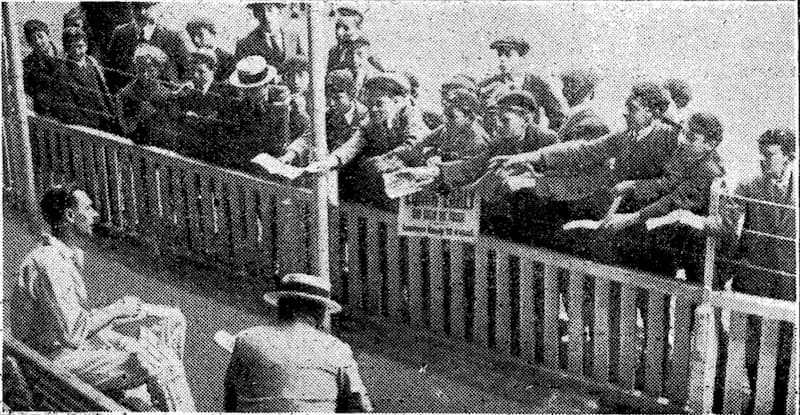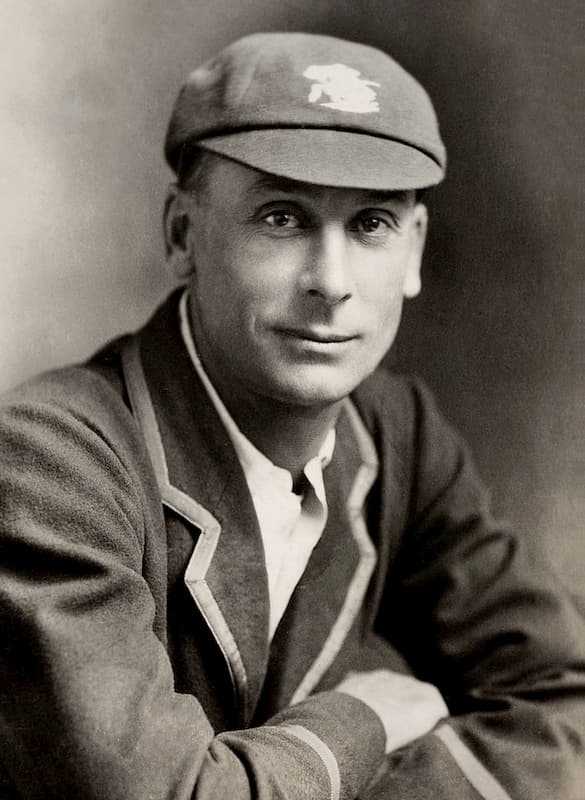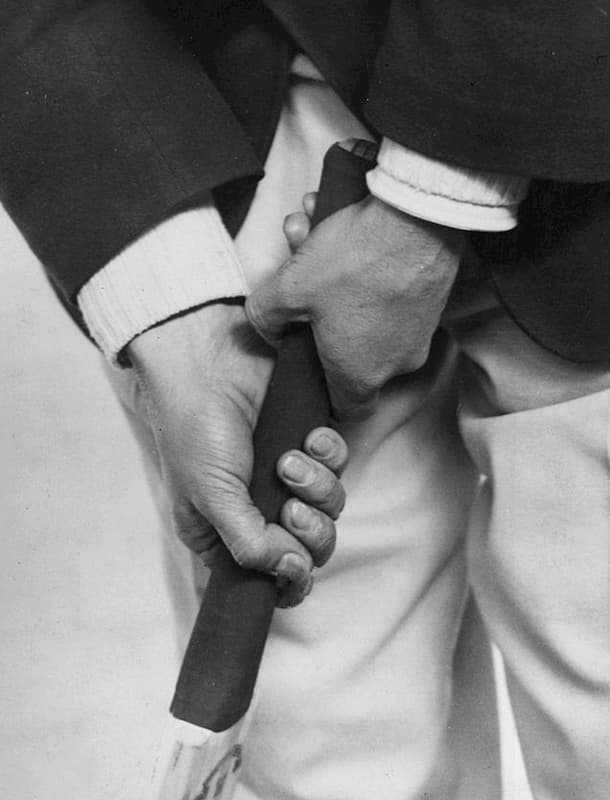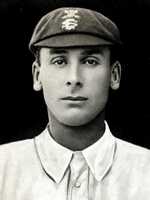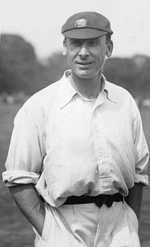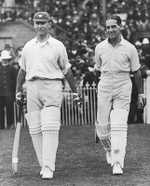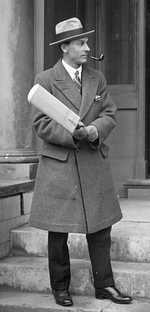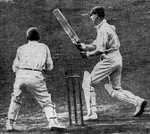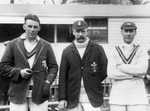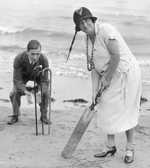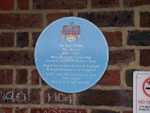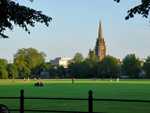1. Early life
John Berry Hobbs, always known as Jack, was born on December 16, 1882 in Cambridge at No. 4 Rivar Place.
He was the first of twelve children to John Cooper Hobbs, a slater, and his wife Flora Matilda Berry.
Hobbs’s education began at a primary school affiliated with St. Matthews, his local Anglican church. In 1891 at the age of nine, he enrolled at the York Street Boys’ School, a fee-paying establishment. Later, he played cricket for the St. Matthew’s Choir team and the York Street team.
At the age of thirteen, Hobbs left the York Street Boys’ School and took a job as an errand boy. During the summer, he acquired a job at Jesus College as a college servant, chiefly assisting the cricket team.
When Hobbs turned sixteen, he became an apprentice gas fitter. In 1901, at the age of nineteen, Hobbs played for Ainsworth against the Cambridge Liberals. He scored 102, his first century.
As a result of his performance, he was included in Cambridge XI, a team chosen from the best local cricketers, to play against a team of professional cricketers, sponsored by Surrey cricketer, Tom Hayward, Hobbs’s boyhood hero. Hobbs’s performance earned him a spot as an amateur for Cambridgeshire.
2. Early career
In 1902, Hobbs was appointed assistant to a professional cricket coach at Bedford School. His job was as a groundsman and bowling in the nets.
He played for a team from the town of Royston against Hertfordshire Club and Ground, coring 119. His father died the same year and his mother was left in great financial hardship with eleven younger children to raise.
Francis Hutt, a former friend and colleague of Hobbs' father, asked Tom Hayward to recommend Jack for the Surrey team. In 1902, Jack played against Tom Hayward and Bill Reeves, an Essex cricketer born in Cambridge.
In 1903, Jack was called to Surrey and given a trial. He was offered a contract as ground staff at the Oval, the home ground to the Surrey County Cricket Club.
Hobbs discovered that he couldn’t play for Surrey, because he wasn’t a resident. He moved to Surrey and over the next two years he played with two clubs, the Surrey Colts and the Club and Ground Eleven.
On April 24, 1905, Hobbs made his debut for Surrey, opening the patting with Tom Hayward. They played against a team called Gentlemen of England. He made 18 in the first innings and 88 in the second innings.
Later that season, in a county championship match against Essex, he made 155 in three hours in the second innings and so completed his maiden first-class century. Lord Dalmeny, the official Surrey captain, awarded Hobbs his County Cap.
During the 1906 season, Hobbs made three centuries and established an effective opening partnership with Hayward. By the end of the season he had amassed 2,135 runs. He was one of three men to pass 2,000 runs that year, just behind Hayward and eighth nationally. He impressed the Marylebone Cricket Club (MCC) and was chosen for the Players team in the prestigious Gentlemen versus Players match.
3. Finest work
During the 1907-1908 season, Hobbs was chosen to travel with his team to Australia.
He missed the first two games because of sea sickness and it wasn’t until January 1, 1908, at the Melbourne Cricket Ground, that he made his test match debut. He scored 302 runs. And centuries against Tasmania and Victoria, totalling 876 runs.
After returning home, Hobbs scored six centuries for Surrey in the Gentlemen v Players game. In all of his first-class games, his score was 1904. The Wisden Cricketer’s Almanack named him one of its Cricketers of the Year.
In the winter of 1909, Hobbs traveled to South Africa. The South Africans were known for its googly bowlers (back of the hand spinners) and matting wickets (canvas mat laid over level ground). Hobbs was partnered with Wilfred Rhodes and coupled with their batting and running skills, they managed to outsmart the Australians. Hobbs opened the bowling and batting. He made 1,124 runs. His performance earned him the title of World’s Leading Batsman.
Hobbs didn’t do as well in 1910 as he had liked. In 1911, he fared better, He went from a score of 1982 runs in 1910 to 2376 runs in 1911. In addition, he bowled 28 wickets. In the 1911-1912 season England played against Australia. Hobbs partnered with Septimus Kanneir in the first test. During the second test Hobbs was partnered with Rhodes.
Hobbs’s aggregate score was 662. In 1912, after tests against South Africa and Australia in the Triangular Tournament, Hobbs’s aggregate score was 2,042.
World War I loomed and in 1916, Hobbs joined the Royal Flying Corps as an air mechanic. Later in 1917, he joined the 110 Squadron Royal Air Force (RAF) He spent some time in France and returned home in 1919.
Upon his return, Hobbs was given a five-year contract with Surrey. He partnered with Andy Sandham. Together they established an effective partnership, sharing 66 century openings.
Before the war, a benefit match was held for Hobbs, but it was unsuccessful. Another was held and it raised enough money for Hobbs to open a successful sports shop in London. In 1920, Hobbs scored 2,827 runs and took five wickets for 21 runs against Warwickshire and his 17 wickets placed him at the top of the Surrey bowling averages.
In the 1920-1921 season Hobbs did well, but Australia won every match of the five-test series. He scored three centuries, but he tore a high thigh muscle. Later, when Australia visited England, he reinjured the high thigh muscle. Further, consistent stomach pains were diagnosed as acute appendicitis which would have been fatal had it not been diagnosed in time.
In 1922, Hobbs captained the Players team for the first time. He scored 2,552 runs, but he declined to tour South Africa.
In 1923, Hobbs struggled but scored his 100th century against Somerset. He was the third man to reach that landmark after W. G. Grace and Hayward. Overall, Hobbs scored 2087 runs.
Hobbs partnered with Herbert Sutcliffe in 1924. They went up against South Africa, but they were successful in difficult batting conditions. They opened the batting 38 times in Tests and 15 century openings. Together they had 3249 runs.
In the 1924-1925 season, England lost the Test series to Australia, but Hobbs broke several records. He made his seventh century, beating the record in the England-Australian tests by Victor Trumper. He also became the leading score runner, passing the previous record of 3412 runs set by Clem Hill in 1912.
Other successes followed. W. G. Grace had a record of 126 first class hundreds. On July 20, Hobbs scored his 125th century against Kent. He scored a hundred against Somerset on August 15, and another on the final day of the match, cementing the claim as outright record holder.
Between 1926 and 1930 Hobbs missed more than a third of Surrey’s matches. He toured Australia with the team in 1928-29. He scored 2,103 first class runs in 1930.
In 1930-1931, Hobbs and Sutcliffe joined a private team run by the Maharajkumar of Vizianagram which toured India and Ceylon. Hobbs scored 593 runs including two centuries.
In the 1932 season, Hobbs traveled with the team to Australia and later to India. He worked as a journalist for The News Chronicle and The Star, accompanied by his ghostwriter, Jack Ingham.
In 1934, Hobbs made his final first-class century against Lancashire. Prior to his retirement in 1935, Surrey constructed a new entrance to the Oval and it was named after him.
4. His legacy
For most of Sir Jack Hobbs life, he was devoted to two things: cricket and family. In 1906, he married Ada Ellen Gates.
They had four children. They were very dedicated to each other and she often accompanied him on cricket tours overseas.
Hobbs was dedicated to his passion. Over his thirty-year career, he was a highly respected and successful cricket player. From all accounts, he had a successful marriage. He and his wife Ada were married for fifty-seven years and had four children. They died within months of each other, she in March 1963 and he on December 21, 1963. He was buried in Hove Cemetery.
